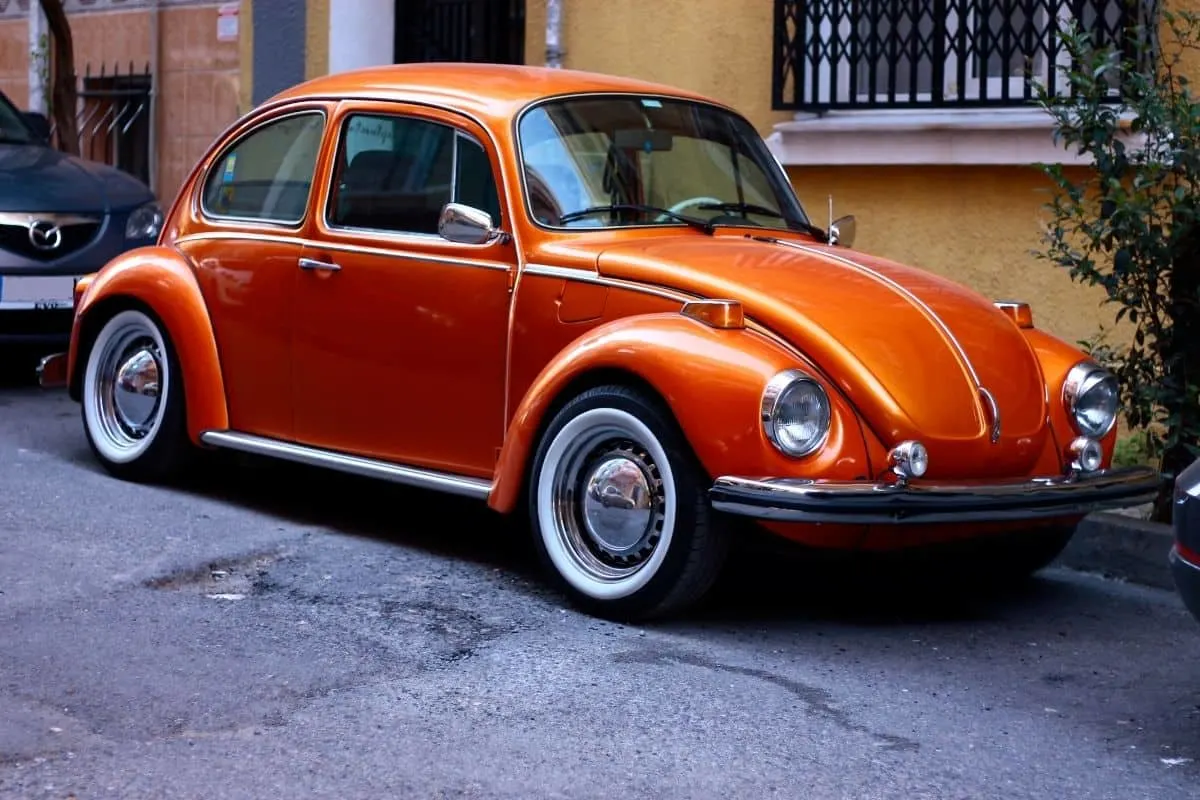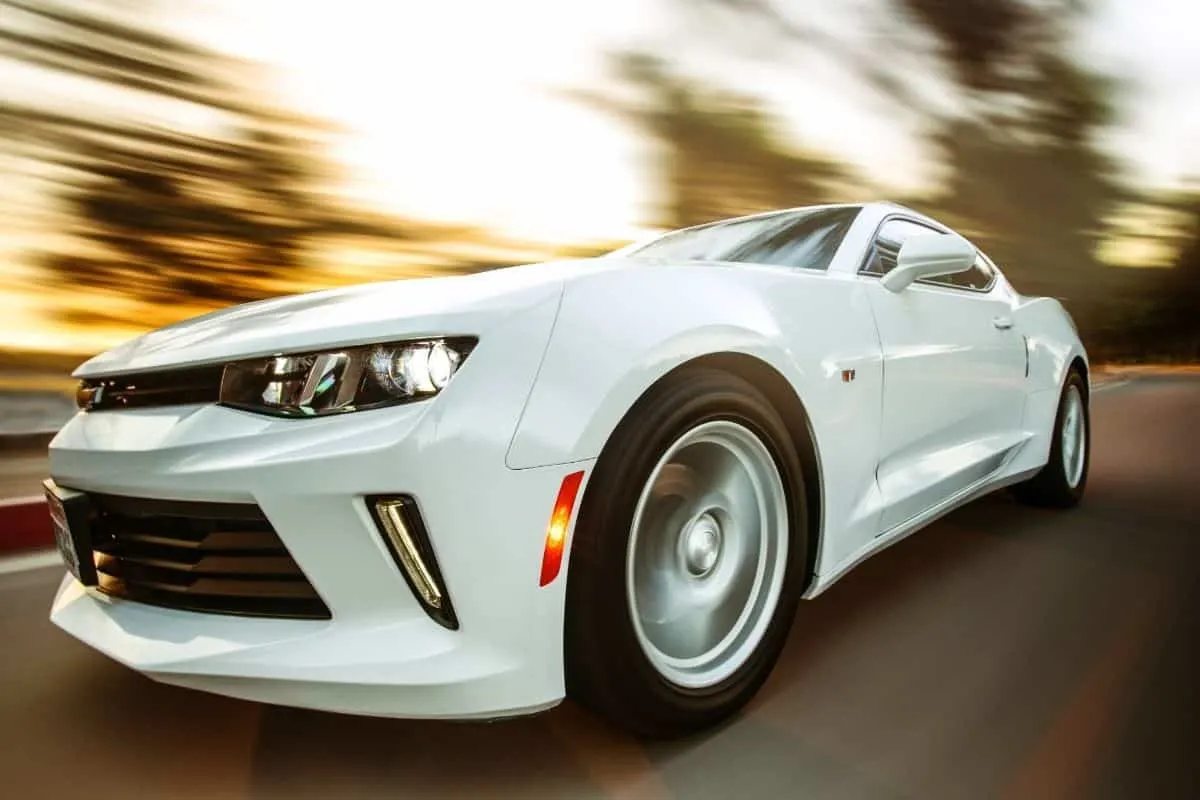Surely you’ve heard of a friend or relative getting into a “fender-bender.” Perhaps you’re curious about what that term actually means. The first step is to get acquainted with the components and parts of automobiles.
Bumpers are located on the front and rear end of vehicles to help protect them from minor collisions. By comparison, fenders are typically located around the wheels and vehicle’s side panels and help protect them from road debris.
Read on, and I’ll cover everything you need to know to distinguish between these related but separate terms.
What Is A Fender?
I’ll start by considering the definition of these terms in the automotive field.
The fender has been a component in automobile design from the very beginning. Fenders are much more distinctive in cars from the model-T days up to the oversized sedans of the 1950s.
Essentially, the fender is the part of the car that rides on the side panel and covers the wheels. Today, we call the section of the car where the fender goes the “quarter panel.” The quarter panel describes the rounded corners of the vehicle that protect the wheels.
The fender “fends off” damaging debris from the road.
Most fenders in historical cars were pronounced, stuck out from the car door panels, and gave the car a distinctive look. Today, most cars (except for trucks and motorcycles) have “hidden” fenders that recede into the car’s body.
Most modern fenders don’t scream out at you but they’re there!
As I indicated above, fenders also exist in other areas. The boating industry is perhaps the second-most commonplace to hear about fenders. But boat fenders essentially serve the same function as car fenders.
Boat fenders are located on the side of ships to protect them from contacting docks, bulkheads, or other boats. They are often inflatable or made of foam materials, which is an interesting contrast to automobile fenders.
Types Of Fenders
There are many forms that fenders take. Ordinary four-door cars have curved metal guards that roughly follow the contour of the wheel. Luxury cars or high-performance racers have fenders that trace along with the wheel with very little space between them.
Most fenders today are made of steel or the same material as the body. A unified shell body has the advantage of reducing manufacturing costs and lowering repair charges. Since fenders often get damaged, most fenders today are part of the body from the start.
The less space separating the fender from the wheel, the more aerodynamic tension decreases from the car and the faster it can perform. This is why a 4×4 truck and a Ferrari roadster have such different fender types–they have different functions.
Consider the classic VW beetle! The bulbous and distinctive metal shell that surrounds the front wheels is both fenders and the defining style of the car.

Nowadays, modern car design has shied away from using fenders as statement pieces, but they once were a significant part.
What Does A Fender Do?
The fender has a very practical purpose – they shield the car’s body from the debris and particles that the wheels loosen from the road surface. It protects the vehicle from dirt, stones, liquid, mud, and any damaging material that might chip the panel.
Older cars and trucks had rather large fenders because they lacked the technology available to reduce road spray from contacting the car’s finish. Today, cars that still exhibit large fenders are more often decorative.
In trucks, motorcycles, and flatbed trailers, fenders are still very much in use. Why?
These automobiles work around heavy-duty materials, off-road conditions, or dangerous areas. The front end of motorcycles is, in effect, a wheel and a fender (plus the steering, etc.).
What Is A Bumper?
As the term indicates, a bumper has a “bumping” function. You will find it on the front and rear of every mass-produced car in the world. The bumper serves as a protective perimeter to the car body, preventing other objects or vehicles from contacting the body.
In high-speed crashes, the bumper is not very effective in protecting the car or its passengers. However, the bumper is quite valuable for protecting the vehicle from low-speed collisions or accidental contact of objects with the grill, hood, exhaust, cooling system, or trunk.
The bumper is the leading edge and the final component of every car design. It is best described as a heavy-duty frame or shield added to the car.
Just like fenders, bumpers have slowly reduced in size over automobile history. In the heyday of American automobile design, bumpers were considered a vital part of the car’s design. Chrome bumpers with stylistic and decorative lines were the norm.
Over automotive history, front bumpers have generated a lot of attention from the public. The luxury sedans of the ‘20s and ‘30s valued fully functional impact-absorbing bumpers. Cars from the ‘50s incorporated bumpers into the first “aero” cars with shark fin design.
Bumper designs today follow the demands of government health and safety standards. After the ‘70s, better oversight into the effectiveness of front- and rear-end bumpers resulted in the saved lives of as many as hundreds of thousands of car crash victims.
Types of Bumpers
Today, many cars incorporate the bumper into the car shell with “bumper covers” This covering hides the functional part of the bumper, which typically consists of steel or aluminum.
Rear and front-end bumpers commonly use the same metal material. However, front bumpers often come with a styrofoam or plastic honeycomb layer that fills out the space between the metal bumper and the cooling system.
The different types of bumpers made over the last century are too numerous to list here. Materials have varied from lightweight plastic to high-tensile steel. The only sure thing is that bumpers will evolve in the future and continue to elude easy definition.
FAQs
There are doubtless many questions that I haven’t answered in this article, but here are the answers to some common ones.
I’ve Heard Of A Fender Cover Recently. What Are They?
Fender covers get a lot of use in mechanic’s shops and in any household where car owners want to protect the car’s surface.
Fender covers are usually made of heavy-duty vinyl or plastic and come with pockets for tools. You drape them over the fender area when you’re working under the hood.
How Much Do Bumper And Fender Repairs Cost?
This is an excellent but hard-to-answer question. The bumper is cheaper to repair usually because it only requires the mechanic to remove the broken plastic cover, replace it, and match paint.
Since fenders are part of the metal car body, they often need more attention.
Do Bumpers Affect Aerodynamics?
Yes! Both bumpers and fenders play essential parts in streamlining an automobile’s aerodynamic profile.
One of the easiest ways to improve acceleration and top-end speed is to install a premium front bumper and fenders on your car.
In Conclusion
Many people struggle to remember the complicated automotive terminology that makes it hard to communicate with mechanics and friends about car troubles. But I hope that you will better understand the difference between fenders and bumpers.
Fenders, just to repeat, “fend off” damaging particles and materials from contacting your car. They surround the wheels and protect the panels from roadside objects.
Bumpers are located on the front and back of the car. Just remember what bumper cars do. They’re almost 100% bumper. Therefore they protect you from minor collisions and low-speed bumps. The bumpers on our cars do the same thing.
I hope my breakdown of the differences between fenders and bumpers will help you better articulate car or insurance concerns if and when they arise for you!
